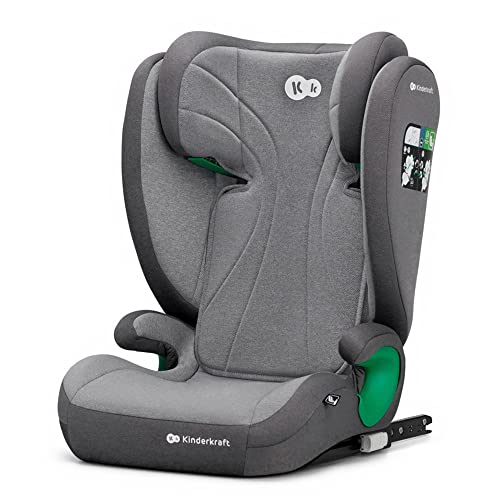Prams and Pushchairs: A Comprehensive Guide for New Parents
Browsing the world of baby transportation can be frustrating for brand-new moms and dads, particularly when it pertains to picking between prams and pushchairs. Each choice offers distinct advantages and limitations, suggesting that making a notified choice is crucial. This article intends to offer a comprehensive understanding of prams and pushchairs, their distinctions, features to consider, and tips for selecting the best one.
Comprehending the Basics: Prams vs. Pushchairs
Prams and pushchairs are terms frequently utilized interchangeably, but they describe different kinds of baby transport systems.
Definitions:
- Prams: Traditionally designed for newborns and infants, prams have a large, fully flat bassinet that permits optimal comfort and safety throughout early phases of a kid's life.
- Pushchairs: Designed for older babies and young children, pushchairs normally have an upright seat that appropriates for children who can support their head and neck. They frequently feature adjustable recline options.
Key Differences
| Function | Pram | Pushchair |
|---|---|---|
| Style | Flat bassinet | Upright seat |
| Age Suitability | Newborn to around 6 months | 6 months to 4 years |
| Mobility | Generally heavier, less foldable | Frequently lightweight and foldable |
| Convenience | Relaxing for newborns, tight fit | Adjustable, can be reclined |
| Usage | Suitable for walks and leisure | Versatile for everyday activities and travel |
Features to Consider When Choosing Prams and Pushchairs
Safety Features
- Harness systems (5-point vs. 3-point)
- Braking systems (foot-operated vs. hand-operated)
- Stability and strength of the frame
Weight and Portability
- Think about the weight of the pram or pushchair
- Look for a design that folds easily for transportation
Size and Storage
- Inspect measurements for fitting through entrances and in cars and truck trunks
- Search for extra storage choices like baskets or pockets
Convenience
- Cushioned seats and adjustable recline positions
- Suspension systems for smoother rides on rough terrains
Weather Protection
- UV protection in sunshades
- Options for rain covers and windscreens
Wheels and Maneuverability
- Wheel size and type (repaired vs. swivel)
- Suspension systems that help handling and convenience
Longevity
- Models that convert from pram to pushchair
- Stronger frames that can accommodate growing kids
Popular Types of Prams and Pushchairs
When thinking about prams and pushchairs, parents often discover numerous styles catering to specific requirements. Here are some popular types:
1. Requirement Prams/Pushchairs
These are great all-rounders, developed for daily usage with a strong frame and adequate storage area. They are frequently adjustable and can deal with various surfaces.
2. Travel Systems
These consist of a safety seat and a stroller that can be used together, making it easy to move the baby from the car to the pram without waking them up.
3. Umbrella Strollers
These are lightweight and foldable, best for fast trips and travel. While convenient, they typically lack some of the safety and convenience features discovered in much heavier models.
4. All-Terrain Strollers
Developed for off-road experiences, these strollers have bigger wheels and a more rugged frame, making them ideal for active households.
Picking the Right Pram or Pushchair
When selecting the ideal pram or pushchair, moms and dads need to take the following steps:
- Assess Lifestyle Needs: Consider how you will use the pram or pushchair (day-to-day walks, travel, uneven surface) and choose accordingly.
- Test Drive: It's helpful to physically check the designs at the store, looking for handling, convenience, and weight.
- Research Brands: Look at reviews and recommendations from other moms and dads about particular brands or designs.
- Consider Future Needs: Think ahead to make sure the option will work as the kid grows. Convertible models use versatility.
- Budget: Set a budget plan but likewise consider quality and durability. In some cases investing more initially can save expenses in the long run.
Frequently Asked Questions
What is the very best age to begin utilizing a pushchair?
A lot of pushchairs can be used for babies from about 6 months old when they can sufficiently support their heads and necks. Make sure to check the manufacturer's specifications.
Are prams suitable for newborns?
Yes, prams are ideally matched for newborns due to their flat bassinet style, offering a comfortable and secure environment.
How do I clean a pram or pushchair?
Always refer to the producer's guidelines, however most covers are detachable and can be cleaned. Clean down the frame with a damp fabric and avoid utilizing harsh chemicals.
Can I use a pram or pushchair on public transport?
Various models differ in size; lightweight and foldable options are usually more suitable for buses or trains. However, always look for Top Pram in your area.
The length of time can I utilize a pram or pushchair?
It generally depends on the weight limit defined by the producer, frequently in between 15-50 lbs, or till your kid no longer desires to be pushed.
Picking in between a pram and a pushchair is a substantial choice that caters to the lifestyle and needs of both the parent and the child. By understanding the differences between the two, examining crucial functions, and picking the best design, parents can ensure they have a safe, comfy, and useful transport service for their kids.
Equipping oneself with understanding provides moms and dads not only comfort however likewise the self-confidence to make the very best option for their child's early adventure into the world. Different way of lives demand different options, so putting in the time to research and test what fits can relieve some of the tensions that come with brand-new parenthood. Pleased walking!

